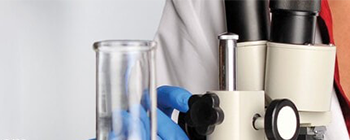Learn More
CD4 Monoclonal Antibody (OX35), PE, eBioscience™, Invitrogen™
Mouse Monoclonal Antibody
Supplier: Invitrogen 12004080
Description
Description: The OX35 monoclonal antibody reacts with rat CD4. CD4 is a co-receptor which participates in signaling through the T cell receptor by making contacts with MHC class II expressed on antigen-presenting cells (APC). CD4 is expressed in the thymus by CD4+CD8+ "e;double-positive"e; and CD4+ "e;single-positive"e; thymocytes, and by CD4+ "e;helper"e; T cells in the periphery. CD4 is a cell-surface membrane glycoprotein which contains four extracellular immunoglobulin-like domains. Applications Reported: This OX35 antibody has been reported for use in flow cytometric analysis. Applications Tested: This OX35 antibody has been tested by flow cytometric analysis of rat splenocytes. This can be used at less than or equal to 0.5 μg per test. A test is defined as the amount (μg) of antibody that will stain a cell sample in a final volume of 100 μL. Cell number should be determined empirically but can range from 10^5 to 10^8 cells/test. It is recommended that the antibody be carefully titrated for optimal performance in the assay of interest. Excitation: 488-561 nm; Emission: 578 nm; Laser: Blue Laser, Green Laser, Yellow-Green Laser. Filtration: 0.2 μm post-manufacturing filtered.
The CD4 antigen is involved in the recognition of MHC class II molecules and is a co-receptor for HIV. CD4 is primarily expressed in a subset of T-lymphocytes, also referred to as T helper cells, but may also be expressed by other cells in the immune system, such as monocytes, macrophages, and dendritic cells. At the tissue level, CD4 expression may be detected in thymus, lymph nodes, tonsils, and spleen, and also in specific regions of the brain, gut, and other non-lymphoid tissues. CD4 functions to initiate or augment the early phase of T-cell activation through its association with the T-cell receptor complex and protein tyrosine kinase, Lck. It may also function as an important mediator of direct neuronal damage in infectious and immune-mediated diseases of the central nervous system. Multiple alternatively spliced transcripts have been identified in this gene [RefSeq, July 2017].Specifications
| CD4 | |
| Monoclonal | |
| 0.2 mg/mL | |
| PBS with 0.1% gelatin and 0.09% sodium azide; pH 7.2 | |
| P05540 | |
| Cd4 | |
| Affinity chromatography | |
| RUO | |
| 24932 | |
| 4° C, store in dark, DO NOT FREEZE! | |
| Liquid |
| Flow Cytometry | |
| OX35 | |
| PE | |
| Cd4 | |
| CD4 antigen p55, CD4 receptor, T-cell surface antigen T4/Leu-3, T-cell surface glycoprotein CD4 | |
| Mouse | |
| 25 μg | |
| Primary | |
| Rat | |
| Antibody | |
| IgG2a κ |
For Research Use Only.



